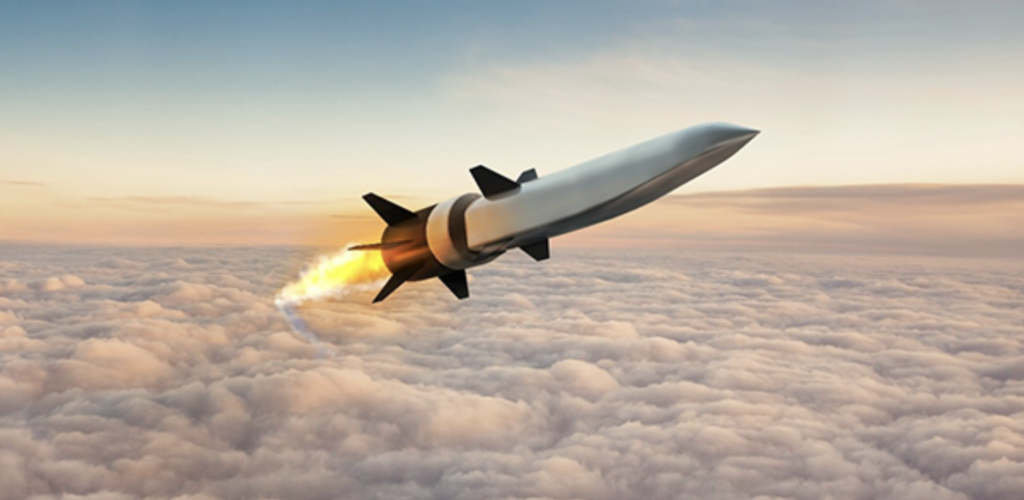Griffin said the United States now has to play catchup and needs to increase funding for missile-tracking satellites to help defend against hypersonic threats.
WASHINGTON — China’s successful demonstration of a hypersonic glide vehicle — a weapon that is boosted to space, orbits the Earth and reenters the atmosphere before it strikes a target — is a “disruptive technology” designed to overmatch the U.S. military, Mike Griffin, former undersecretary of defense for research and engineering, said Nov. 30.
These advanced weapons likely to be deployed by China and Russia are not intended for nuclear war but are hugely disruptive because the United States does not have the means to predict where they will strike, Griffin said at a virtual event hosted by the Advanced Nuclear Weapons Alliance Deterrence Center.
Griffin was undersecretary of defense during the Trump administration and led the Pentagon’s effort to deploy a space-based network of missile-defense sensors to detect and track hypersonic missiles.
Russia and China “don’t want a nuclear exchange any more than we do,” he said. Their conventional military forces are less advanced than the United States’ so a hypersonic glide vehicle gives them an edge, Griffin added. “They can take us down to their level with the right kind of disruptive technology. Hypersonic weapons is exactly that kind of disruptive technology.”
Griffin said the United States now has to play catchup and needs to increase funding for the Space Development Agency and the Missile Defense Agency which are developing sensor satellites to detect and track hypersonic missiles.
“When your adversaries are telling you that they are out to take you down, we should listen,” he said. “We don’t listen well, but maybe we should.”
A rival nation equipped with a a boost glide vehicle is just “20 or 25 minutes from a target,” he said. And the cost exchange ratio — meaning what the U.S. spends versus what the enemy spends — “from our point of view is horrific,” Griffin added. “They launch a missile costing maybe a few million dollars or even 10s of millions of dollars, and two or three of those can take out an aircraft carrier.”
In the global race for geopolitical dominance, hypersonic glide weapons level the playing field “not by improving their own capabilities, but by removing ours,” said Griffin.
With a boosted glide weapon, “once you’re in orbit, you don’t have to land immediately. You can land at the time and along the azimuth of your choosing. It can come up from the south or from the west and essentially create an all azimuth multiple salvo conventional strike.”
Kelley Sayler, analyst in advanced technology and global security at the Congressional Research Service, said hypersonic glide vehicles that are launched into space before de-orbiting and approaching their targets would give China the ability to deploy vehicles over the South Pole where they are less likely to be detected by U.S. early warning sensors.
“U.S. early warning assets were oriented towards threats coming over the North Pole, which is where we generally expect them to come,” Sayler said. “If the threat instead comes over the South Pole, it could further reduce the amount of warning time that we would have.”
For years Russia has been concerned that the United States has the capability to intercept its traditional ballistic missiles, she said. “They believe that pursuing hypersonic weapons could give them assured means of penetrating U.S. missile defenses and restoring some of that strategic stability. It’s sort of similar to what we’ve heard from China.”
U.S. developing hypersonic weapons
The Pentagon currently is developing both hypersonic glide vehicles and hypersonic cruise missiles which are powered by high-speed air breathing engines so they don’t require a separate booster.
Sayler said the Pentagon’s budget for 2022 includes $3.8 billion for hypersonic weapons research, which is more than last year’s $3.2 billion budget. “They’re at various stages of development, but none of them have been fielded yet,” she said. By some estimates, the earliest the United States would field a hypersonic weapon would likely be around 2023.
Griffin said these programs should be accelerated. When he left DoD, the U.S. military services were on track to produce two hypersonic rounds per month. “We need to up that by a factor of 10,” he said. “The Chinese are not going to be scared by a few dozen rounds a year. They need to be facing hundreds of new rounds per year.”
The Pentagon also needs to innovate and come up with new concepts. “There are air breathing and boost guide systems. That’s great. But let’s go beyond that thinking. What are the disruptive technologies to disrupt what they can do?”
Tom Karako, senior fellow at the Center for Strategic and International Studies, said he agreed with Griffin’s concerns but warned against misinterpreting the extent of the threat.
“We see lots of scary click bait-y headlines about this, about hypersonic missiles being silver bullets, being ‘quote unquote’ unstoppable,” he said. “I think this is not helpful.”
Hypersonic glide vehicles and cruise missiles are aimed “at the gaps and seams and the weaknesses of U.S. power projection,” said Karako. But there are ways to fill those gaps using existing and emerging technologies. These more advanced threats give DoD an opportunity to develop “the missile defense system of the future.”
